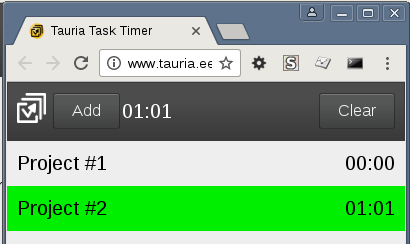
This year (2017) I had need to think about possibilities to make wired Internet of Things (IoT) network for ~100 devices in one installation. During looking for possible existing solutions I have seen that wired IoT is kind of forgotten. Wired IoT with existing communication protocols is going to have issue- energy consumption. Today the assumption is that amount of communicating devices in a system is below 60. IoT in its essence will increase it easily to 1 million.
The Issues
Today most Internet of Things communications concentrate on wireless communication. High frequency and high density data communication allows to send few hundred bytes in a few microseconds and then turn off the radio. This way huge energy saving will be achieved. Devices that need to report a measured consumption of some utility once a month are able to run 10 years with 10Wh battery, which has acceptable metric size.
I have seen a situation, where IoT device is going to need wiring because it is driving rather high load for the mentioned battery. Also the devices will be stationary in the system and these will communicate few times in 10 minutes. Thus I had question about which low speed wired communication to use. The industry does have lots of them today. I have argued with myself a lot about why not to use wireless communication. Main point against wireless is that in the radius of the connection, only one device can talk at the time. Differentiation is in radio channel. Wired communication in contrary is happening in a narrow line- the wire. Thus in this static installation where around 100 devices will be talking once a minute, saving radio space is good thing to do. The radio is very good for non-stationary installations or in low density installations where wiring is too expensive and has lots of agreement issues.
I made my choice- the RS-485 and Modbus to Ethernet gateways this time. Well, this is not clean IoT solution. The IoT happens after the central controlling unit that gathers data from Modbus devices. I started to think from time to time about what the wired IoT should look like. I have today vision about it. In this article I will concentrate a ISO-OSI layer 1 energy consumption property of communication, and will give out proposal for the solution.
Energy Consumption
RS485
On RS485 and other similar media, reasonably powerful transmitter is needed to send signal to the line. For example, RS485 powered from 3.2V source will spend energy on line where the load for the transmitter is around 60 ohms.
In the following calculations, we will use transmission speed of 125kbaud. Sending one bit takes 8us then. For transmission of data at this rate, for one bit consumed energy will be:
[math] {\Delta} E = {{U^2} \over {R}} \cdot {\Delta} t [/math],
where E is energy, U is supply voltage, R is load resistance and t is time. When we assume powerful transmitter, which is able to connect the line load to supply without additional resistance, then:
[math]{\Delta} E = {{3.2[V]^2}\over{60[{\Omega}]}}\cdot{8[{\mu}s]} = 1.36[{\mu}J][/math]
Extraordinary and rather expensive RS485 compatible tranceiver MAX3475 takes [math]50[{\mu}A][/math] of current and this is very low compared to the above.
When the system with the most energy efficient transceiver does have 1 million nodes and in each branch of the busses is installed 64 nodes, then the system does have at each moment around 15625 active transmitters N. The yearly energy consumption becomes:
[math]{\Sigma}E=N\cdot{{\Delta} E\over{\Delta{t}}}\cdot{t_y}=…[/math]
[math]15625\cdot { {1.36 [ {\mu} J ]} \over { 8 [ {\mu} s ]} } \cdot
(60 [ s ] \cdot {60 [ min ]} \cdot {24 [ h ]} \cdot {366 [ days ]}) = … [/math]
[math]… = 83997 [ MJ ] = 23.3 [ MWh ][/math]
LIN Bus
The most fair comparison would be not powering peripherals from LIN, in that case approx [math]12[V]/1[k\Omega]/2= 6[mA][/math] of current consumption for transmission in average (as not all bits take the power) , it makes [math]72[mW] \cdot 50[{\mu}s] = 3.6 [{\mu}J][/math] for transmitting one bit. The LIN does have maximally 16 nodes on single bus, thus there would be around 62500 active masters all the time. Analogously, yearly consumption would be [math] 39.5 [MWh] [/math].
Idea: Pulsed Modulation
Idea consists of using edge based communication, where the electrical energy is sent to bus with short peak of [math]0.5 {\mu}s[/math] when the “UART” level is changing. It will consume significantly less energy than keeping the line powered during full bit time. Also when two or more following bits are with the same level, then no pulses might be needed at all. Sending one pulse takes:
[math]{{3.2[V]^2}\over{60[\Omega]}}\cdot{0.5[{\mu}s]}=85.3[nJ][/math].
This is 16 times less than RS485. Also, as there will be no pulses when signal does not change, the additional savings will happen. This will provide additional savings in average by factor of 2. The effective savings is 32 times then [math] (728 [kWh])[/math]. And by reducing the pulse width further, even more savings will be obtained.
A sample of modulated wave-forms is on the picture:

A test result on 500m long twisted pair cable shows nice results. The test schematics was made with PNP and NPN transistors. Totally the components would cost around 1€. The schematic was made in a way that it draws current only while transmitting and receiving pulses. At 250kbaud the worst case reception current consumption was 80uA and transmission was taking 7.5mA. Supplu voltage was 3.2V, thus one pulse transmission took 96nJ and one pulse reception took 1nJ.

Tauria has patent pending on the method.




Thanks for another great article. Where can anyone get that kind of information written in such a perfect manner? I have a presentation next week, and I’m on the search for such information.
Server 2016 Consultants